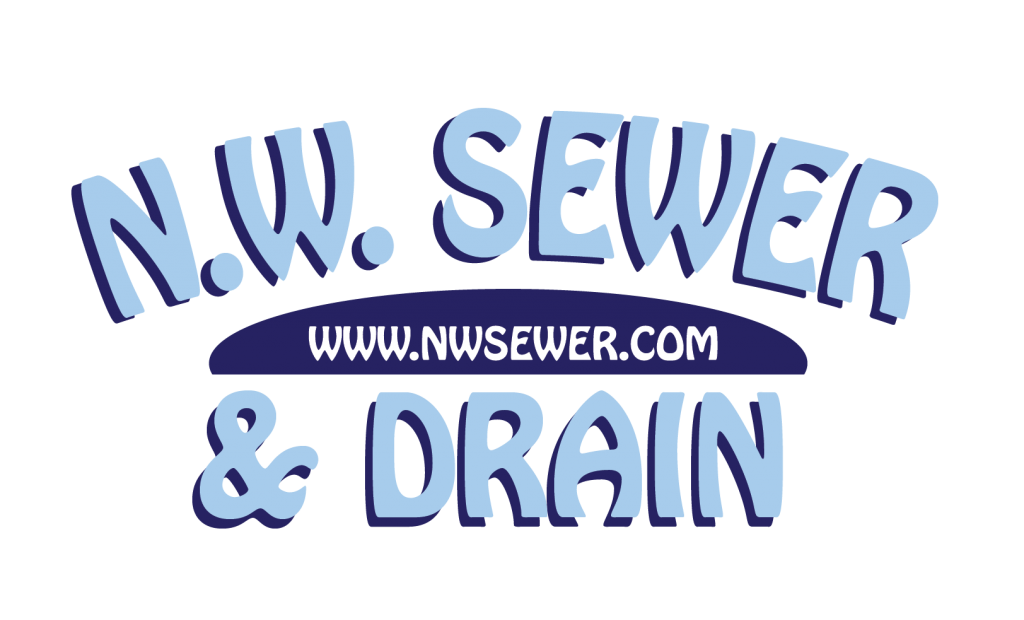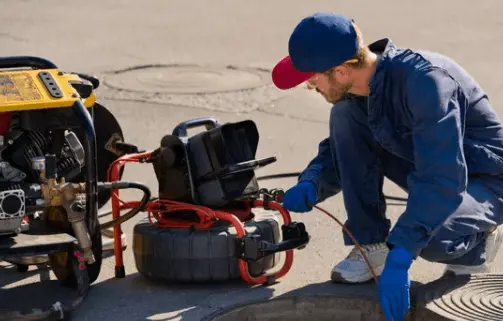It involves the insertion of a special sewer video camera head into your sewer line cleanout. The camera head is connected to a flexible cable and is snaked through the pipes to inspect the pipes and locate the damage. Above, the drain specialist can see the inside of the sewer line as the camera sends a live feed to the monitor.
How Does a Sewer Camera Inspection Work?
A sewer camera inspection is used to pinpoint issues like blockages, broken pipes, and cracks in drain pipes. The sewer and drain specialist first inserts the camera line into the drain pipes and, with the aid of the long flexible cable attached to the camera head, snakes it through the pipes. Because the inside of the pipes is usually dark with all the gunk and waste inside, it is usually dark.
To solve this problem, the camera carries a light on its head. This helps the drain specialist carrying out the inspection to see through the dirt on the monitor. The length and flexibility of the cables play critical roles in the process. A flexible pipe makes it easy to move through bends and curves in the sewer line. Ideally, the camera should extend a long way down sewer pipes up to the sewer line outside your home. This can be helpful if you’re investigating the cause or origin of a sewer backup.
Using a sewer camera inspection to find problems in sewer lines can save homeowners the trouble of having their yard or lawn dug up to detect/solve plumbing issues. This is why they are used in contemporary sewer repair methods, such as pipe relining and pipe bursting.
When is a Sewer Camera Inspection Important?
Sewer lines usually run underneath the foundation of your house, in most cases, about 2-3 feet under the ground. Whenever a plumber needs to find the source of a sewer blockage or backup in your home, a special sewer video camera head connected to a flexible cable is inserted into the main sewer line cleanout and snaked through the pipes.
A sewer camera inspection is ideal for both residential and commercial properties. At N.W. Sewer & Drain, we usually conduct a sewer camera inspection when we get called to resolve any sewer line problem. This allows us to see the nature of the problem, the exact location of the issue in the sewer lines, and work out the best solution to rectify the situation.
So, a sewer camera inspection is essential for resolving almost every sewer line-related issue. Keep in mind, however, that there’s a limit to what a sewer camera line can see. It cannot see all the problems in your drainage system.
What Can a Sewer Camera Inspection See?
Here are the issues that a sewer camera inspection can detect in your sewer line:
- It is used for locating sewer lines: Sewer inspection cameras usually have a location device attached to them. With the aid of a special receiver above the ground, the sewer and drain specialist can detect the camera and know where the sewer line runs below the ground. This can be very helpful in minimizing damage to your yard, especially when the drain specialist needs to dig into the ground.
- It can be used to determine pipe types: With a sewer camera, a plumber can tell what kind of pipe you have installed in the sewer line. Whether it is PVC or cast iron pipe. This is useful when doing a repair or replacement of the bad drain pipes.
- It helps locate clogs in your sewer line: Clogs and dirt build up in sewer lines over time. This is often a result of a build-up of dirt in your sewer line. As the grease and wastewater flow through, they tend to cling to the surface of the drain pipes, restricting the flow of waste.Tree roots can also be the cause of a slow-moving drain. But a sewer camera line can detect all these issues, making it easy for the plumber or drain specialist to address the problem appropriately.
- To understand your plumbing system: Sometimes, to solve sewer line issues, your plumber will need to study your sewer system. A special sewer camera makes it possible to see the T’s, Y’s and fittings or know the kind of pipe used in the installation.
Signs You Need Sewer Camera Inspection
If you’re not sure what to make of the problem in your plumbing system, here are some signs that you need to carry out a sewer camera inspection:
- Gurgling sound in your drain pipes
- Sewer backup
- Slow-moving drains
- Foul odors emanating from your plumbing system
- Septic waste pooling in your yard
- Unusual patches of green grass growing in your yard
Getting Quality Sewer Camera inspection
If you think your sewer line needs to be inspected or you’re experiencing blockage or slow-moving drain, it is best to work with an experienced sewer and drain company to detect the cause of the problem accurately.
Sewer inspections can be tricky, in that what you think is a broken pipe may well turn out to be a heap of clog in the drain walls. In other words, it takes experienced sewer and drain specialists to tell the difference between rusts in the sewer line and actual problems. We’ve seen cases where clients were informed they had a crack in their sewer system after a camera inspection, whereas there were no cracks.
Residential & Commercial Sewer Camera Inspection from N.W. Sewer & Drain
At N.W. Sewer & Drain, we are a team of experienced sewer and drain specialists committed to helping all our clients fix all drainage issues in both residential and commercial buildings. We typically use a preliminary camera inspection to detect sewer line issues and advise our clients on the most appropriate remedies.
Currently, we service residential and commercial properties in the greater Seattle area, as well as Marysville, Everett, Lynnwood, Oak Harbor, Mount Vernon, Bellevue, Kirkland, Shoreline, Renton, Lake Forest Park, Mountlake Terrace, Auburn, etc. For about 20 years, we have maintained top-notch drain cleaning services. If you are on the lookout for an affordable and reliable sewer camera inspection service, feel free to contact us today at 206-931-7728 to schedule an inspection of your drain lines.

